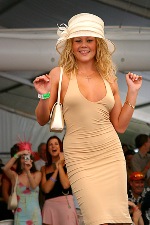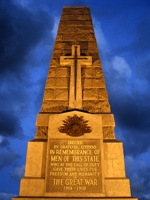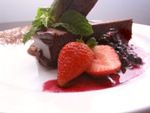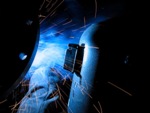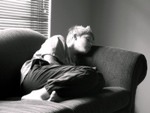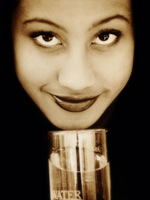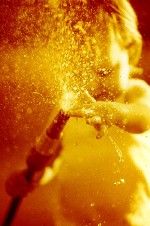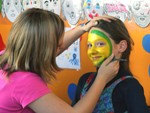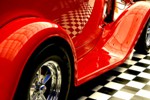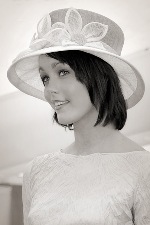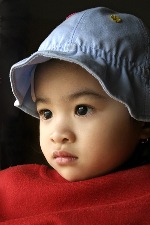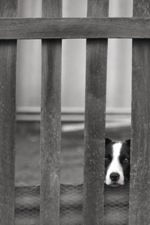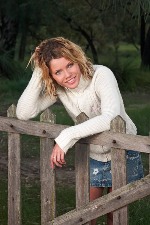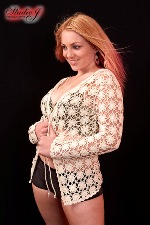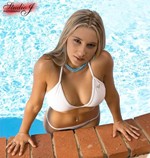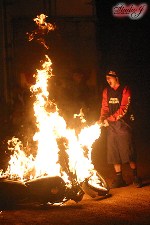Discuss:
Discuss this Article in the forums
Hi, I’m Julian Tan from Shuttertalk.com. Thanks for obliging me with the pleasure of this interview.Well hi Julian, I’m Jamie Ferguson from Studio J Media. Hey you’re welcome, thanks for running such a cool site, I’m glad to be there with such nice people and help wherever I can.
And most helpful you’ve been. So why don’t we start off by giving a brief background of yourself?
I grew up out in the sticks, I’ve lived in a half dozen places around Western Australia, mainly in the wheat belt, after High School I moved to Perth to study and lived there on and off since. Its a great place to live and some awesome locations for photos.
Great. So when did you develop an interest in photography?
I started photography back in high school where I took it for a couple of years, as a lot of kids do. I was keen to go further and joined the local club. After being there less than a year I gave it up almost completely, I found the attitudes of the old photographers there very negative, very few were willing to help and more interested in protecting their “secret techniques” than sharing something. Back then I used to use an old Olympus OM-1 but the cost of film and developing was more than I could afford as a Uni student.
The passion didn’t really develop until I was living in Canada, say around 6 years ago. I’ve devoted a lot of time to since I’ve been involved in photography second time round. The country there was so spectacular and so different to where I lived before and it inspired me to start taking “memories” then when I returned to Australia. I started getting into digital for technical captures at work.
I’m very much like yourself – starting off with film and moving to digital. How did you find the transition?
Digital gave me the real spark a few years ago though and it has become much more serious in the last 18 months. The learning curve with film is much steeper than digital, and the instant feedback you get with digital makes learning so much easier. Thankfully I had a bit of a head start.
So when you went digital, would you say that you were an accomplished photographer already? Or did you actually hone your skills using digital?
I would say I honed my skills with digital, when I started shooting film again I wasn’t really prepared for it financially so it didn’t go far. I’ve learned twenty times the amount since digital than before, before it was purely technical.
Speaking of which, did you have any formal training, besides what you did in school?
I’ve been to a few workshops down here but I’d say the majority of it was self taught. It has been an adventure so far, both good and bad.
So tell us what you do for a living?
I’m an Ops Manager, I cover all the admin, logistics, finance for a group of workshops: One handles mechanical engineering, pipefitting, welding, another does pumps and the last handles both plus electrical fitting. All man’s mankind of workers!
It is where I got into digital originally — I have to do quite a bit of photography of jobs we do. Mostly records of work that apprentices give onto their college teachers, examples of our work, recording the history of it.
Sounds interesting, but not the sort of photography that you’d rather be doing?
Definitely not my cup of tea, perhaps on a mine site I’d have more interest. I’ve been more involved in the action and glamour side of things for the most part.
Jamie pauses to quip about the fact that while he’s never been interviewed for photography before, he has been grilled a bit at a local make-up college he regularly visits. According to Jamie, the make up college is a handy place to go, to get students to do cheap work, and it’s good practice for them too.
Ok, so tell me more about Studio J Media.
Event coverage, cars and bikes for local owners, magazines such as Hot Fours and Perth Street Car, motorcycles, and now, a lot of catwalk and print for the swimwear and sport glamour side of things. We have a couple of calendars out which are basically that, the first was a bike and babe and the other is swimwear for an event.
Well my partner Belle and soon to be mother of my son, also shoots and handles all our organising, and also a couple of freelancers, and our journo Mark “Bondy” Bond. We started purely because I became involved on a paid basis otherwise we were happy to do it as individuals.
Excellent. Who are your major clients?
Well for the most part it’s been self funded projects. Around 18 months ago I started to start covering local motor and bike shows and had quite a few people ask for prints so I started to re-think things. I hired a D60 quite frequently to do shoots with individual cars and bikes for local owners and shortly after magazines such as Hot Fours and Perth Street Car.
So far, has the business been paying for itself? Any plans to quit your day job?
Heck no, I’ve got myself down to four days a week at the moment but with a baby on the way and trying to grow everything I need to keep working. It is getting there though, slowly, the only way to make money is to do a lot of free and barter self promotion.
Right. Is that how you get most of your photography gigs?
Yes, trying to get my name out there I approach anyone I can. If you are involved in photography to make it more for business than pleasure, you can’t just sit back and wait for the work to come to you. It’s too competitive and small a market for that.
I would hope that in a year or two, I will be doing it on a fulltime basis.
Sounds like a great plan. Let’s talk about your work with Studio J Media. What’s one of the most memorable events / jobs that you’ve covered?
I would have to say covering the swimwear competitions and calendar from that was one of the best, and following that working at the Dirt Drags and covering the Crusty Demons.
Well I work in a fairly boring industry (for me) during the day so I need some excitement in life.
I must say, you do like the exciting things in life Or rather, have an appreciation of them. What would normally happen on a typical shoot? Say for example the, swimwear competition.
Well that starts out heading to the venue. Usually night clubs and bars are the hosts for them. If we get the chance, we meet the girls before they go on stage — these days we know quite a few of the girls already.
And then find a decent position. They tend to be fairly nasty shooting environments filled with either very dim areas (as far as photography is concerned) or brightly lit with coloured stage lighting.
Trying to focus and also get a proper exposure is the hardest part, but nothing like a challenge. When I look back at the first event we covered through to the way the pictures come out the improvement is awesome. The right tool for the right job, plus a bit of luck doesn’t play a small part of it.
I’m sure… still objects are hard enough!
Yeah, amazingly enough when the girls are still it has caused a few disasters! I still get a few shots when doing group shots even where it’s out of focus! The dim light doesn’t help, and on the stage it focuses on the smoky light in front.
So the policy is take lots of photos for insurance?
As much as I’d like to, it’s not often possible, as it’s a fairly fast paced environment. It’s certainly an area where better gear (better AF) would pull me out of a few scrapes, the maxed out aperture doesn’t allow for much DOF.
I tend to shoot between 100 and 170 shots per competition, depending on how many girls there are and what their performance is like. All in the space of 30 minutes on stage and perhaps 15 off stage.
“Performance”?
Yes, it’s a competition. The girls all have their individual routines to music and a group routine. The usual process is that they come out in sportswear as with the most recent event, which was Miss Indy. They do their piece, go off and the next girl comes out, and after they have all been out they come out as a group.
Each girl has a sport, some come out doing a cheerleader routine, boxing, AFL, baseball, motocross etc. Dressed to match, they are judged on a few different areas.
So obviously for the staged performances, you’re pretty much stuck to what the competition brings. How do you organise the shots off stage?
Usually individual shots posed around the venue and group shots. It all depends on how creative I am, and how willing the girls are to relax. My creative director Belle helps a lot! Some are comfortable and others aren’t, sometimes there isn’t enough time to do enough shots and give them feedback to develop a rapport.
Do you have to arrange the shots?
Yes, arrange the girls in their location, based on a few things, height, setup poses, etc. Unless they have some experience they require a fair bit of coaching. There is a certain amount of having to be specific in what you want and at other times there will be experienced girls who like to help out.
Do you find that bit difficult? Get nervous working with them?
I’m not overly nervous shooting them, but getting them to pose properly and creatively is the hardest task. And then trying to get natural light.
Ok you mentioned the fast pace before, and where your equipment can help you out. Let’s explore that further. What equipment do you tend to shoot with?
I use Canon DSLRs and otherwise spend my time shooting with a 50mm 1.8, Sigma 24-70 or the stock wide angle 18-55 for some of the group shots on stage and off. Helped along with a 550EX flash and a slaved 420EX.
Initially, I hired a D60 quite frequently to do. When the 10D came out, I knew I would have to move up to something more professional if I was to keep going. And so it was halfway through last year that I truly became a Canon Boy forever.
When I bought the 10D, it died a few months later leaving me in the lurch with no camera and the Melbourne Cup fashions and Indy on my doorstep. So, I purchased a 300D while I waited to hear the fate of my 10D. Supposedly it had suffered while in the factory and a silica gel capsule was inside the camera body popped after a few months. Go figure.
Ouch. In terms of accessories? How do you last through the day?
Sugar free Red Bull for myself, two batteries for the camera seems to be enough to last a full day shooting, I prefer the after market batteries to the originals to be honest as they last longer. The flash sucks a lot of juice through it though and often goes through a full set of high powered rechargables.
Depending on the length of the event two cards is plenty, I don’t tend to shoot RAW at this kind of event so it gives a good 150 shots on one card. On longer shoots I take the laptop, and it’s always with me anyway.
Ok, and when the shoot is done, describe the workflow you apply to your images.
That does vary from shoot to shoot. The first step is to pull the shots off and review them and delete the ones I don’t like. Next, make a backup of all my shots, copy them to another folder and start working. I pull them either into Phase One’s Capture One and convert them from RAW files or jump straight into Photoshop.
For most events they are either due in print or in the paper or on website for promotion so I have to do my first batch of crops.
Do you usually end up manipulating your images? If so, what sort?
I manipulate every shot to some degree or another, be it basic colour and exposure correction, sharpening through to full blown retouching. I restrict myself for the majority of images to 10 minutes each or on special work anywhere up to an hour.
So, your spin on the benefits of digital?
Instant feedback and a far quicker turnaround would just be the beginning. But with everything there is a negative side — post processing time, a lot of brainwork getting your colour correction right and the huge amounts of data involved.
As I leaf through Jamie’s portfolio, Jamie stops to drag on (in his own words) “an unhealthy cigarette”. He laughs as his partner, Belle, points out that there aren’t any “healthy” cigarettes.
Looking through your portfolio – the shots are pretty creative… where do you tend to draw your inspiration from?
I shoot what I see and what I find interesting, I haven’t done a study on other photographers really. Now I spend quite a bit of time looking at others’ work as it is now, not the past masters, as I’m not much of a traditionalist.
On a personal scale I still like to just shoot what I see, candids are a favourite of mine. There is something appealing to me about capturing people in their natural environment, parts of me feel guilty still about intruding but they don’t usually win out.
On a “professional” side of things though you have to learn to know what others want as well. Commercially, anyway.
So, seeing that you photograph as part of your “job”, do you still see photography as a past time or hobby?
Not at all, I love doing any side of it, even the mundane side during the 9-5 job. It stopped being that quite a while ago, unfortunately. Getting around shooting candids and the other things I enjoy doesn’t happen very often these days.
Do you think Studio J Media takes a toll on your personal time as well?
Absolutely, but I try and fit it all together, doing ok so far. Thankfully my partner is very understanding and also involved on every level which makes life a lot easier.
That always helps — like my wife with me and Shuttertalk! I also hear you’ve got a little one on the way!
Yes my first, my son is due in December, my Christmas present. My partner already has two which are often my willing and unwilling subjects.
I’ve been told now that we have to put out a baby calendar but I’m no Anne Geddes!
Jamie shows me one of the calendars that Studio J Media released at the end of 2003. The Sass & Steel series, based around the automotive/model scene, can be best described as a custom bike and babe calendar.
So tell us more about your calendars…
The first two were for clients, one a swimwear one for the finalists in a competition and the other for a bike club over here of one of their events.
I’m working on number 4 & 5 at the moment, the second in our series of “bikes and babes” titled Sass & Steel which first came out last year. They did well enough that we’re insane enough to do it again.
How did you get started with them in the first place?
Initially I was asked to do the swimwear one, and from the experience gained from that (the entire thing was shot on location over a 16 hour day) we decided to publish our own. Having contacts in the bike world and modeling made it a good place to start, a good market for the male calendar buying market, rev heads and sex combined.
Our calendar took quite a bit longer, logistically it’s a nightmare. Sometimes we did four shoots in a weekend, there are only so many good shooting days over the summer though.
Trying to get a bike, model, gear and weather to behave on a tight time frame with the best light of the day was the hard part.
In the second Sass n Steel one guy had a bike accident the day before his shoot putting it off for a few weeks, one of the models had problems on two different occasions leaving us to put off the shoot for a third time.
So to make up 12 photos, how many shoots / photos would you have to go through?
Well its normally fourteen different shoots. There are lots of different formats out there, we picked the January – January format, 13 months plus a cover shoot. Normally the whole process is around 800 shots.
Wow! So end to end, how long to produce one calendar?
Between two weeks and six months. The last one has taken the longest, lots of setbacks and the dilemma of shooting on location with portable studio lighting and having to do one re-shoot.
It can be frustrating and expensive.
I can imagine. I’m particularly taken by one shot in your portfolio though — that’s the one with the baseball player. What’s the story behind that?
That was one of the first series of shots to use what I have dubbed “anti glamour” editing. It has been used quite a bit in the US for sports advertising recently. That was the intent, plagiarism or imitation of style and then trying to work out how they did it and edit it up myself from normal images.
It was for a series of three shots for a commercial/promotional project that was to represent employees that have another life as athletes, beyond the suit. I nicknamed the series “Grim Determination” which was the expression I was trying to get across. Normally for composition its wrong, but the space around the outside was intentionally left for advertising blurb.
I love the expressions on their faces… was that hard to achieve?
Not at all, being sports people it wasn’t hard, most of them were natural hams and the shots were taken after games. The hardest part was trying not to laugh!
So did it end up in mainstream media?
No, it ended up on a few bus stops near head office and in the corporate magazine but that’s about it. It never really had a huge commercial life or was planned to have. However, I’ve never seen any of my work at that size before. It’s certainly an inspiration to move to medium format digital ASAP!
Jamie laughs as I pull out one particular image in his portfolio, with a man standing next to bike on fire. Jamie tells the story of Seth Onslow, from the Crusty Demons (motocross stunt show), and how he had hurt himself in New Zealand and wasn’t doing any stunts. He had been riding around on a tiny pee wee bike and then went to jump a Harley up a ramp, and straight down into the dirt, as it was too heavy to jump. Jamie tries not to choke as he tells me that Seth set it alight when they wheeled the bike back.
Tell me about your other shoots. Any interesting stories?
Audiences at shoots are quite common, especially when you have a hot bike and model there. It’s funny when they pop up behind me, I’ll be busy shooting and there will be anywhere between 3 or 4 to a dozen people behind me.
Sometimes the younger guys give a bit of a rev up, some are brave and approach the girls but our resident Journo and ex army bodyguard is a God send. Amazingly enough people are very polite for the most part, if they see us shooting they often watch a little but make sure not to get in the way.
I remember shooting up at a busy marina a few months ago, in the background on a wooden jetty there were a few people fishing and tourists wandering around, we ended up with one of the biggest crowds.
At the end the guys who belonged to the bikes we were shooting got a bit excited and performed a few stunts in the car park before taking off.
Unfortunately they left us embarrassed standing in their smoking rubber, packing up gear while the wind blew it over the crowd.
You mentioned a few assistants before. Who do you have working for you and what do they do?
My partner Belle who shoots, gives creative advice, handles all the paperwork (model and property releases), handles all my contacts and schedule, she also writes and does marketing for us.
Bondy is our resident bike expert, journo, bodyguard cum assistant. I have a few young people I have who work as assistants from time to time, and a couple of locals who shoot to cover overflow events.
Also we have a permanent promotional girl manager who does a lot of it herself, Aleisha.
It sounds like you’ve got an exciting future ahead. Where do you see yourself in 2 years time?
Permanent studio, managing models, running our own events, having a national calendar release and hopefully still alive!
The best part would be working for myself, the most enjoyable would be creating something that I can be proud of, realising that no matter what I know there is always more to learn and that when I have done what I can with it financially that I will hopefully be ready for the artistic side of things when I’m older.
Sounds like a good plan to me… any tips for those starting out?
Don’t sit back and wait, do your best to network, start with something you know. Find a niche.
Awesome. Before we finish, some quick, final parting shots:
Digital or film?
Both, but digital for now, I can always see that film will play an important role, there isn’t anything that comes close to the quality of medium format slide film. Digital is forever changing though and it’s where I see myself in the future.
Candid or posed?
Candid.
Black and white or colour?
Colour or quadtone.
Art form or photojournalistic approach?
I don’t see myself as overly artistic.
Windows or mac?
Irrelevant but old school Windows. Photoshop works in either.
Star wars or star trek?
Star Trek. I’m a Former Professional Geek.
Jamie Ferguson, It’s been an absolute pleasure, and I must say I’ve learnt so much through this interview. Thank you so much for your time.
Thank you Julian, it has been a lot of fun. That’s one thing I enjoy, I’ve always been a teacher at heart. Hopefully I will have more to give back in the future.
All the best for the future, and hope Studio J Media takes off!
Me too. Let’s hope there is a place for Shuttertalk.com in a mutual future.
Did you find this article interesting? Would you like to get in touch with Jamie and discuss things further? Feel free to leave any feedback or comments in the forums.
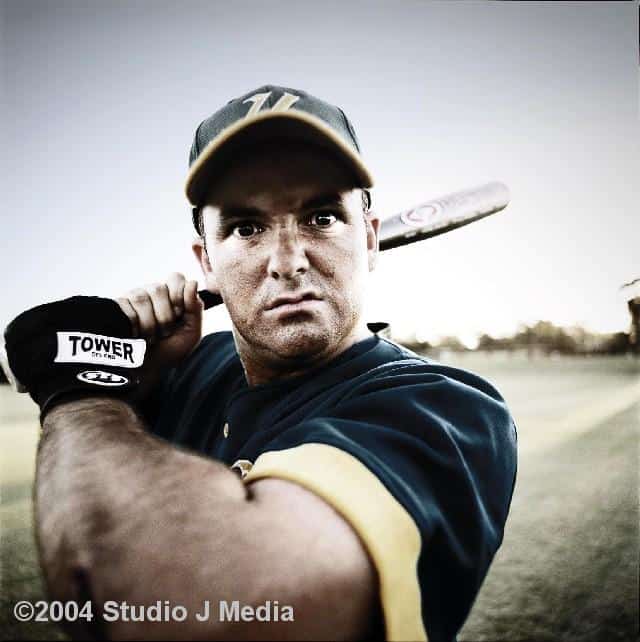
 It was the first day in Spring, and a sunny one at that, when I caught up with Jamie Ferguson from Studio J Media, which is based in Perth, Western Australia. Renowned for event coverage for assignments such as the 2003 Melbourne Cup, Gold Cost Indy for Redline, ASMY (Australian Swimwear Model of the Year), Miss Indy, V8 Supercar, QC Girl, Miss West Coast, Summergirl, and other shoots.I was very privileged indeed to get an insight into his work, life and photography.
It was the first day in Spring, and a sunny one at that, when I caught up with Jamie Ferguson from Studio J Media, which is based in Perth, Western Australia. Renowned for event coverage for assignments such as the 2003 Melbourne Cup, Gold Cost Indy for Redline, ASMY (Australian Swimwear Model of the Year), Miss Indy, V8 Supercar, QC Girl, Miss West Coast, Summergirl, and other shoots.I was very privileged indeed to get an insight into his work, life and photography.